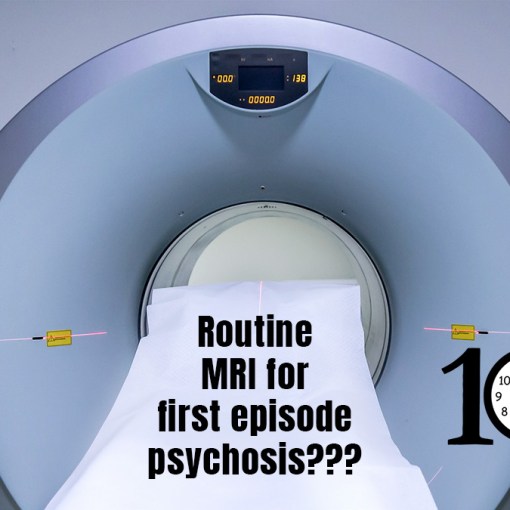Kaneswaran, L. Pediatric Glomerulonephritis: A rapid review, First10EM, May 22, 2023. Available at:
https://doi.org/10.51684/FIRS.130309

This is a guest post by Dr. Lanujan Kaneswaran. Lanujan is a first-year Family Medicine resident at the University of Toronto. He has a background in medical health informatics and machine learning. His areas of interest include artificial intelligence and machine learning in medicine, and health equity through advocacy and technology.
What is glomerulonephritis?
- Spectrum of inflammatory disorders characterized by hematuria and proteinuria
- Seen as typically asymptomatic proteinuria and hematuria, nephrotic syndrome, hypertension, or impaired renal functioning
What is the pathophysiology?
- Inflammatory process affecting glomerulus. Usually deposition of immune complexes within glomeruli.
- Causes: typically immune-mediated disorders, inherited disorders, post-infectious sequelae
When are we most likely to see pediatric glomerulonephritis?
- Post-streptococcal glomerulonephritis: prior infection with strains of group A B-hemolytic streptococci
- Usually occurs about 7-15 days after pharyngitis and 3-5 weeks after skin infection
How does it present?
- The most common features on history will be bloody or foamy urine, edema, or oliguria. It may also present with headaches, nausea, and fatigue. A recent URTI or skin infection may be a clue.
- The physical exam is often normal. You might identify edema or hypertension.
- Specific causes will have specific findings, such as the palpable purpura, arthritis/arthralgias, abdominal pain of Henoch-Schonlein purpura/IgA vasculitis
What is the work up?
- The key first step is urine testing. A urinalysis might identify hematuria, RBC casts, proteinuria. Urine microscopy may identify dysmorphic RBCs or RBC casts
- Most patients will also have blood work for CBC, creatinine, electrolytes
- It won’t happen in the emergency department, but definitive diagnosis often requires renal biopsy.
- If post-streptococcal glomerulonephritis is being considered, send anti–streptolysin O or anti–DNAse B titers (typically elevated). A serum C3 level (typically decreased) may also help.
What is the treatment?
- Treatment is primarily symptomatic management, with a focus on hypertension, fluid balance, potassium, and phosphate levels.
- Start the patient on a low sodium/phosphate/potassium diet and limit fluid intake.
- Avoid nephrotoxic medications, like NSAIDs
- Therapies considered on a case by case basis include steroids to treat the underlying inflammatory disease, and an ACEi or ARB for hypertension.
What is the prognosis?
- Streptococcal disease or Henoch-Schonlein purpura usually resolves completely and without sequelae, but other causes can progress to renal damage and ultimately end-stage renal failure
- IgA nephropathy can either completely resolve or progress to end-stage renal disease
What is the disposition?
- If asymptomatic with probable streptococcal disease and normal vitals: eligible for discharge after consulting nephrology and outpatient nephrology referral
- If rapid disease progression, consider admission
You kind find more rapid review here
You can find more guest posts here
References
- Floege J, Amann K. Primary glomerulonephritides. Lancet. 2016 May 14;387(10032):2036-48. doi: 10.1016/S0140-6736(16)00272-5. Epub 2016 Feb 25. PMID: 26921911.
- Madaio MP, Harrington JT. The diagnosis of glomerular diseases: acute glomerulonephritis and the nephrotic syndrome. Arch Intern Med. 2001 Jan 8;161(1):25-34. doi: 10.1001/archinte.161.1.25. PMID: 11146695.
- Thomas R. Welch, “An Approach to the Child with Acute Glomerulonephritis”, International Journal of Pediatrics, vol. 2012, Article ID 426192, 3 pages, 2012. https://doi.org/10.1155/2012/426192
- Calatroni M, Consonni F, Allinovi M, Bettiol A, Jawa N, Fiasella S, Curi D, Abu Rumeileh S, Tomei L, Fortunato L, Gelain E, Gianfreda D, Oliva E, Jeannin G, Salviani C, Emmi G, Bodria M, Sinico RA, Moroni G, Ramirez GA, Bozzolo E, Tombetti E, Monti S, Bracaglia C, Marucci G, Pastore S, Esposito P, Catanoso MG, Crapella B, Montini G, Roperto R, Materassi M, Rossi GM, Badalamenti S, Yeung RSM, Romagnani P, Ghiggeri GM, Noone D, Vaglio A. Prognostic Factors and Long-Term Outcome with ANCA-Associated Kidney Vasculitis in Childhood. Clin J Am Soc Nephrol. 2021 Jul;16(7):1043-1051. doi: 10.2215/CJN.19181220. Epub 2021 May 26. Erratum in: Clin J Am Soc Nephrol. 2021 Dec;16(12):1877. PMID: 34039568; PMCID: PMC8425616.
- Cara-Fuentes G, Smoyer WE. Biomarkers in pediatric glomerulonephritis and nephrotic syndrome. Pediatric nephrology (Berlin, West). 2021;36(9):2659–73.
- Trautmann A, Boyer O, Hodson E, et al. IPNA clinical practice recommendations for the diagnosis and management of children with steroid-sensitive nephrotic syndrome. Pediatric Nephrology. 2023;38(3):877-919. doi:10.1007/s00467-022-05739-3
- Dixon A, Stauffer B. Renal Emergencies in Children. In: Tintinalli JE, Stapczynski J, Ma O, Yealy DM, Meckler GD, Cline DM. eds. Tintinalli’s Emergency Medicine: A Comprehensive Study Guide, 8e. McGraw Hill; 2016. https://accessmedicine.mhmedical.com/content.aspx?bookid=1658§ionid=109407930





